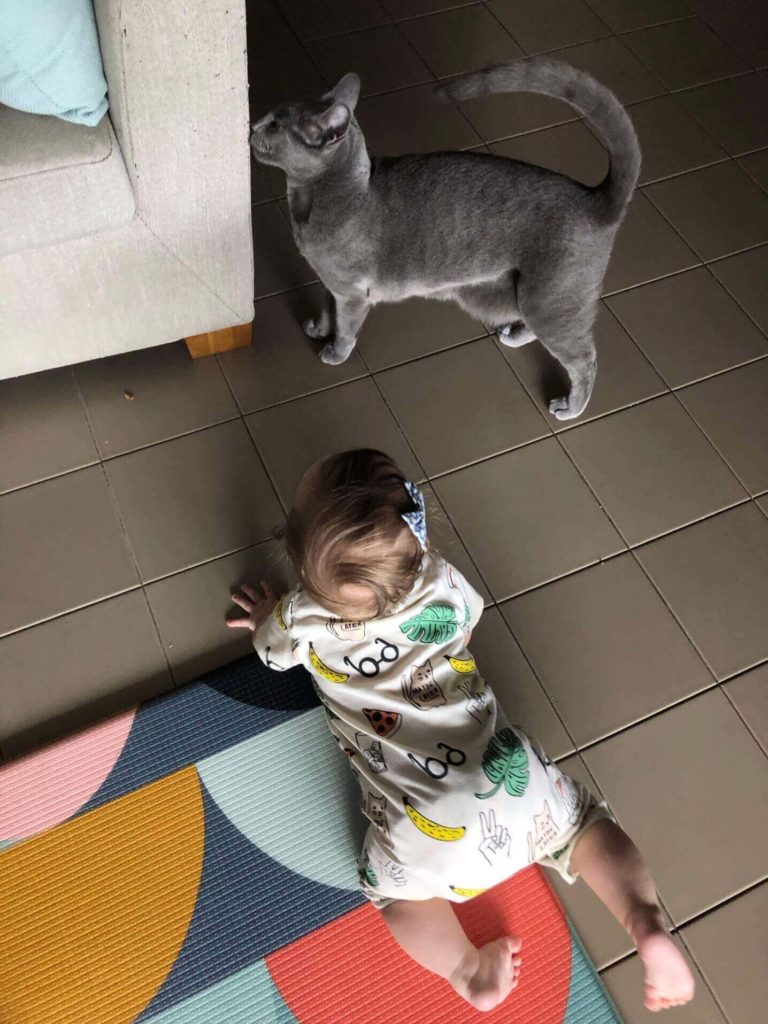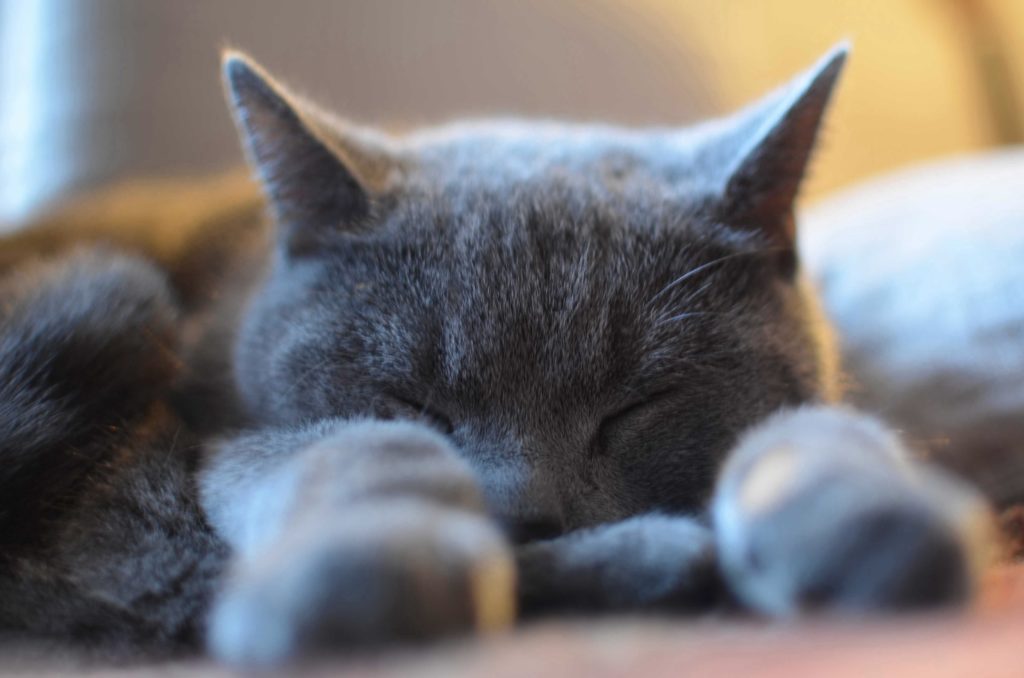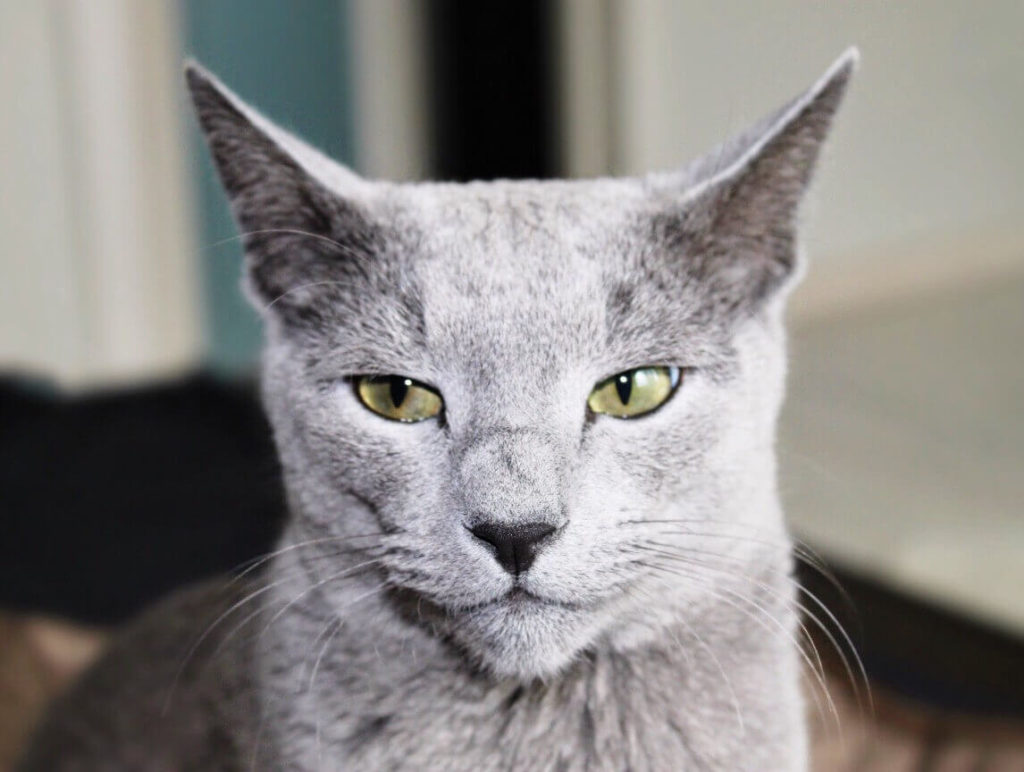Most of the pets bring home certain allergens with them that can cause allergies in humans. The case with cats is no different, in fact, higher than any other pet.
Russian Blue Cats don’t cause allergies in a child if the child doesn’t have any cat allergy. But a child which shows an allergic reaction to other cats can also show reactions to this breed as well. Although the case can be rare as Russian Blue Cats are hypoallergic cats that cause minimal allergies.
It is pretty common to question about allergies related to cat breeds. The stress of bringing home allergies for children is scary as well as stupid. That’s why you need to go through all these details to understand Russian blue cats and their relation to allergens.
Do Russian Blue Cats Cause Allergies?
The answer to both yes and no. Yes, these cats secrete the Fel d1 protein that is responsible for most allergic symptoms like sneezing and itching. And it also produces dander which is another key element that irritates allergies.
And No, because the secreted protein is so low that it doesn’t induce allergies to non-allergic people. These elements only affect those who are more vulnerable and susceptible to allergens.
Do Russian Blue Cats Cause Allergies In Babies?
The answer to the above question is also both yes and no depending on the immune system of the child.
Children are more vulnerable and sensitive compared to adults. A small factor can trigger allergies in children.
The immune system of small babies responds to cat dander, protein, or fur as a foreign particle and tries to eliminate the threat. The response is the same as the response given to viruses and bacteria, which results in allergic symptoms.
If your child is allergic and asthmatic to cats, then there is a possibility that they are allergic to Russian Blues too. However, a normal child doesn’t get any allergies most of the time.
Russian blue cats are hypoallergenic, not 100% allergen-free but have very few allergens making it favorable for children.
What Factors From Russian Blues Cause Allergies In Babies?
The possibility of Russian Blue causing allergies is pretty low, however, some factors can cause allergies.
If your child is sensitive to certain allergens, then there is a chance these cats can trigger it too.
A Russian Blue Cat carries the allergen in its saliva, urine, and dander. Saliva and urine have Fel d1 protein which is the main component causing allergies.
The fur shedding peaks up during fall and spring, giving up more fur for the child to breathe in. This can trigger allergic reactions such as sneezing, runny nose, scratchy throat, and itchy eyes.
And the additional allergens, the secretion of Fel d1 protein and dander, can bring more allergies resulting in asthma symptoms. The child starts coughing, sniffling, wheezing, and finally shortness of breath.
The chances of allergies are quite less because the secretion of protein and dander is very less for Russian Blue Cats.
Are Russian Blue Cats Hypoallergenic?
No cat breeds in this world are 100% hypoallergenic. Every cat, at some level, causes allergies to human beings.
The case with Russian blue cats is no different, although, it is very less than other breeds. These cats produce very less glycoprotein that is the prime cause of allergies.
They don’t even shed much, although it is one of the furry cats making it nearly non-allergic.
How Can You Find Out If Your Baby Is Allergic To Russian Blue Cats Or Not?
The simplest method to test whether your baby is allergic or not is to conduct a water test.
You can find someone who owns a Russian blue and ask them if your child can play with it.
After a while or an entire day, you can see if your child has any rashes or not, whether it is sniffling or not. If you see your child sneezing continuously, sniffling, or rubbing their eyes, that signals the allergic reaction from the cat.
But the best way to know is through allergy tests; Your child can take a skin test or a blood test to get accurate results.
What Can You Do If Your Baby Shows Symptoms Of Allergies From Russian Blue Cats?
First and foremost, you need to remove your child from the contact of the cat and try to see what’s wrong.
The wise thing to do when the allergies hit is to take the child to the doctor immediately and follow what the doctor says.
You can use allergy medications such as antihistamines and nasal corticosteroid sprays after consulting the doctor about dosages.
Later on, you need to avoid and discourage your baby to play with Russian Blues. The simple thing to do is to make sure your baby doesn’t come in contact with allergen again.
Why Is Russian Blue Cat Better Choice For Allergies?
Among all the breeds of cats, Russian blue cats bag the third place in being hypoallergenic. If you have a child or any other family member allergic to cats, Russian Blue is one of the ideal choices.
The reasons behind Russian blues being a better choice are:
Fur Shedding
Their thick fur not only results in a huge body appearance but also is at forty-five degrees angle. This appearance and angle help to keep fur fall as low as possible.
And the fur fall rate is very low during other seasons except for fall and spring; although it sheds more fur during these seasons, the fall rate is comparatively low than any other breed.
Fel d1 Protein
The main component that causes allergies from the cat is the Fel d1 protein. The secretion of these proteins from the cat’s sebaceous glands and saliva, as well as skin, triggers hypersensitivity 1 in humans.
Russian blue cats secrete very low levels of this protein making them ideal for petting in allergic houses.
Dander
Dander from cats is one of the reasons that trigger allergic reactions in humans. The good thing about Russian blue cats is that they shed very little fleck of skin.
The dander, they shed, is very low compared to other breeds and isn’t sufficient to cause allergies.
How Can You Prevent Allergies In Babies?
There are several ways to control the allergic reactions caused by Russian Blues even though the case is pretty rare.
Discourage Hugging And Kissing
The most probable cause for allergies is the face-body contact between your cat and your child.
If you want your child to be safe, then you can teach them to avoid hugging and kissing the pet. It may sound a little harsh to teach, but this can act as an effective solution.
Regular Vacuuming
The child tends to play around the house, and run towards every nooks and corner. They lie on the carpet and rollover on the floor.
The carpet and corners accumulate most of the dander and fur that the cat sheds. So, it is necessary to vacuum the whole house regularly.
Encourage To Wash Hands
Washing hands is one of the basic things to do to keep up good hygiene. You can encourage your child to wash their hands more often.
After petting a cat or playing with them, washing the hand properly cleans off most of the allergens. This process avoids the hand to face contact with allergens in the children.
Wash Off Bedding
The bedding, you use regularly, stores the most allergens when the cats sit on it. It is always best to wash off all the beddings twice a month to avoid allergies.
And the house with a child needs to be more careful, so washing it once a week is a better remedy.
Air Filters
Air filters pick up most of the allergens present in the room atmosphere. This installment is a long-term solution for allergy problems.
Open Window
The healthy and fresh air from nature is the best solution anyone can ask for. The child’s bedroom is the most delicate place of the house, which needs aeration more than others.
The aeration not only provides fresh air to the room but also removes the allergens from it. This exchange helps to make the child’s room healthier and safer.
Separate Room For Infants
The newly born child has a weak lung as well as sleeps a lot during the first three months. Cats, being cats, love comfy warm best to sleep and tend to gravitate towards the child’s bed.
You can, however, make your cat stay in a separate room, restricting it to enter the child’s bedroom. This will stop the contact between allergens from the cat and the infant.
Bathing
The fact that you don’t want to know but have enough idea about is: Cat hates bathing. The major problem of allergy is, however, solved when the cat is clean and tidy.
What you can do is, you can make your cat habituated to bathing in the bathtub. They will have a playful space as well as it will be easier for you to clean your cat. Here you can learn the best grooming and cleaning tips for Russian blue.
A clean cat produces less dander and secretion of protein which is the result of bathing the cat properly.
Conclusion
In conclusion, Russian Blue cats are the ideal choice for a house with children. They are hypoallergenic and cause nearly zero allergies in any human. The minimal fur shed, dander, and low secretion of Fel d1 protein make them safe for the children in the house. If you want a loving and active cat that is safe for children, then Russian blue is the best choice. It is better to run a few tests for allergies; however, you won’t regret your decision of getting Russian Blue.





